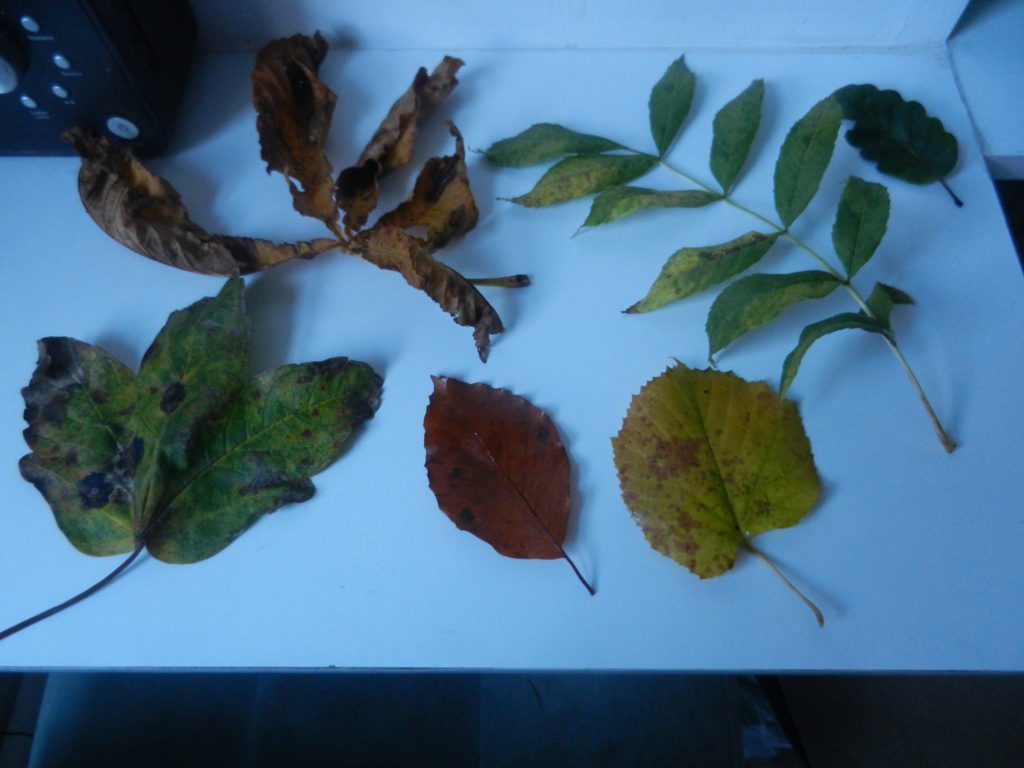
A selection of six different fallen leaves collected just this morning while walking the dog in the park. Top right is an oak leaf with a short leaf stem at the bottom of which is the remnant of the leaf joint; the rounded leaf edges are a good identification tool. Below and to its left is an ash leaf, here the leaf stem is longer with the leaf joint at the end. This is one leaf, not 11, each of the 11 is a leaflet as they are all served by one leaf joint. This is not the only species to have leaves comprising a number of leaflets. Bottom right is a lime leaf with a slender leaf stem and a toothed edge to the leaf. To my mind two things identify a lime leaf, an irregular leaf base and a single longer tooth at the top of the leaf (both seen here).
Top left is a horse chestnut leaf here with five leaflets and a sturdy leaf stem, this one being in a more advanced state of decomposition. Bottom left is a sycamore leaf with a longer leaf stem. Sycamore is an example of a lobed leaf with rounded chunky edges, five in the case of sycamore. The black spots on the leaves of a sycamore tree show the presence of an aphid which might weaken the tree but not cause its death. The last leaf, centre bottom, is a beech leaf with a short leaf stem and characteristic curled-up edges. The russet brown colour is very characteristic of beech leaves in autumn.
(to be continued).